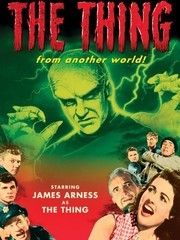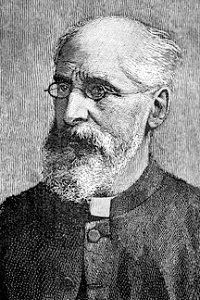Alfred Edersheim
Due to Trump's antics this has become a big issue in Evangelical circles because it has theological implications. I saw a post by famous apologist McGrath highlighting a blog by a theology professor who was discussing this idea:
Slacktivist blog December 28, 2015 by
Fred Clark
Here, again, is theologian Miroslav Volf, talking about the “same God” business that recently bubbled up due to Wheaton College president Philip Ryken’s ongoing efforts to Mohler-ize that school:
All Christians don’t worship the same God, and all Muslims don’t worship the same God. But I think that Muslims and Christians who embrace the normative traditions of their faith refer to the same object, to the same Being, when they pray, when they worship, when they talk about God. The referent is the same. The description of God is partly different.
Volf put this even more succinctly recently on Twitter, writing: “Xians & Muslims disagree about immensely important things about God, but they are disagreeing about *God*, not between gods, so to speak.”
The reason that Volf and other theologians are so emphatic on this point is because it relates to some basic and essential aspects of Christian theology. After all, if Wheaton’s Ryken and other white evangelicals are going to say that Muslims do not worship the same God because they’re not Trinitarian, then we’d also have to say that Jews don’t worship the same God. That would be a patently unorthodox claim that would have vast — and vastly horrifying — theological implications.[1]
In order to deal with the issue Christian theologians are breaking the question in two parts and dealing with the issue of Jews and Christians first, so that is what I will do.
Jews and Christians
Of course Christians and Jews have the same God. This issue was never a problem for the Church. It was a problem for the Jewish segment of Christianity in the early days of the Trinitarian dispute, during the formation of the doctrine. Heggisepius tells us that there were Jewish-Christian groups that called Paul the anti-Christ and that did not accept the Trinity. Such groups receded into history and were probably assimilated back into Judaism
.[2] The gentile Christians formulated doctrine's of God in the image of Plato's forms and rewrote the Hebraic aspects of the faith through Greek ideas. But it was supposed to be the same God. It was the redeemer of Israel (Messiah) Jesus claimed to be. That was the premise when Paul went to preach to the gentiles. The development of Christian doctrine was
ad hoc, tackeling each issue as it arose. So they slowly began change to Greek idea.
[3]
The gentile Christians had lost touch with the Hebrew theology and as they began to turn to Greek they created as doctrine that explains God in Greek terms, three
peronsa in one
essence, the Trinity. Unless you understand these concepts you can't understand the doctrine. That creates tye conflict because it necessitates that Jesus, a man (he was truly a man) shares essence with the divine, with God. That is the basis upon which Christians say "Jesus is God." That's the problem Jews have with Christianity (theoogically, pogroms excepted). Therefore the Trinity is one God; three identities belonging to one essence of deity. This is not three Gods; one God, one essence, one being, three identities. Beyond that, there are much more complex issues between the eastern church (which emphasizes Christ's deity) and the Western (which emphasizes his humanity--but not at the expense of his deity). We'll delve into these later. Deity of Christ The Trinity actually began as an attempt to explain Jesus' deity:
Many thinkers influential in the development of trinitarian doctrines were steeped in the thought not only of Middle Platonism and Neoplatonism, but also the Stoics, Aristotle, and other currents in Greek philosophy (Hanson 1988, 856–869). Whether one sees this background as a providentially supplied and useful tool, or as an unavoidably distorting influence, those developing the doctrine saw themselves as trying to build a systematic Christian theology on the Bible while remaining faithful to earlier post-biblical tradition. Many also had the aim of showing Christianity to be consistent with the best of Greek philosophy. But even if the doctrine had a non-Christian origin, it would would not follow that it is false or unjustified; it could be, that through Philo (or whomever), God revealed the doctrine to the Christian church. Still, it is contested issue whether or not the doctrine can be deduced or otherwise inferred from the Christian Bible, so we must turn to it.[4]
Trinity and Hebrew thought
They did not just change all at once. There are connecting links where Platonists influenced the doctrine but they were also Jewish thinkers. The major such example is Philo, a Jewish Platonist.
A direct influence on second century Christian theology is the Jewish philosopher and theologian Philo of Alexandria (a.k.a. Philo Judaeus) (ca. 20 BCE - ca. 50 CE), the product of Alexandrian Middle Platonism (with elements of Stoicism and Pythagoreanism). Inspired by the Timaeus of Plato, Philo read the Jewish Bible as teaching that God created the cosmos by his Word (logos), the first-born son of God. Alternately, or via further emanation from this Word, God creates by means of his creative power and his royal power, conceived of both as his powers, and yet as agents distinct from him, giving him, as it were, metaphysical distance from the material world (Philo Works; Dillon 1996, 139-83; Morgan 1853, 63-148; Norton 1859, 332-74; Wolfson 1973, 60-97). [5]
There is a basis for fixing the issue. There is appoint at which our understanding has to reach back to pre Greek days and draw upon Hebrew again, by the same token we must also be aware of a Hebrew basis (in principle) for some kind of Trinity=like idea.The Trinity is n9ot in Hebrew scripture, nor is the doctrine f the Trinity patterned after Hebrew thought. Yet there is a basis for the claim that certain ideas in Hebrew scripture lend themselves to Trinitarian understanding just as the coiner of the term Trinity (Tertulian) was reaching back to Hebraic ideas when he thought of the concept.
Memra
There is a link between the Logos of John and the Hebrew concept of God's presence revealed in the world. The term used in the Tsrgamim is
Memra. When they refered to it in Greek they called it
logos.The Wisdom figure in Proverbs is translated with memra, but in
Ben Sirach (an apocryphal work of 180s BC) Logos and Memra are both used interchangeably of this wisdom figure, which tells us that the Jews of that period
thought of Logos as a term for Memra, God's presence
.
As early as the first century A.D. interpretations (or paraphrases) of religious passages known as Targums, began to be written down in Aramaic for Jews who no longer spoke Hebrew. In the Targums the Jews used the Aramaic word memra meaning “word” as a personal manifestation of the presence of God. When Exodus 19:17 tells us that—“Moses brought the people out of the camp to meet with God” the Targums interpret this to mean that he brought them—“to meet the Word (memra) of the Lord.” When Psalm 2:4 declares—“He who sits in the heavens shall laugh” the Targums interpret it to mean—“And the Word (memra) of the Lord shall laugh them to scorn.” [6]
The Greek literally says "the logos became (transformed, turned into) flesh and pitched his tent among us." This refers to the tabernacle of God the dwelling place of God with humanity, and to the Greek conceptions of the soul, that the soul is in the body as a person dwells in a tent. The connection being, that the divine Logos became a human person, Jesus Christ. The context of the passages removed all doubt that it is Jesus under discussion. In v18 "one has ever seen God, but God the Only begotten son has revealed him to us." This is a literal rendering of the Greek. "God the Son." So here the Logos is linked to the Tabernacle, to God's presence among humanity, which will be crucial in examining the word Memra. Though logos is not related linguistically to sophia (wisdom) the associations between the Johanine Logos and the Sophia of proverbs is clear. "through him [Logos] were all things made, and without him was not anything made that was made" (John 1:1, "let us make man in our own image). Prov. 8:27"...I was there when he set the heavens in place...then I was the craftsman at his side." Sophia began as the goddess of pagan religion, and naturalized and turned into a literary device, it became again the goddess of the Gnostic mythos, one of their abstract nouns used as a proper name.
Several New Testament scholars recognize a link between the wisdom of proverbs and the logos of John. For example, Alice Lafferty
.[7] The logos of John is, then, used in direct opposition to the docetic Gnositicizing Sophia.Helmut Koester argues that John's purpose is to write a Bibliography of wisdom. He concludes the anti-docetic aspects in saying "the word became flesh." The heavenly Sophia cannot have a biography, the flesh and blood Jesus can, and as such, God's wisdom is the subject of this biography
.[8]
Logos is a Greek translation of the Aramaic word Memra [God's revealed will and wisdom] in the Targum [second century Aramaic translation of Hebrew Scriptures]. In his brilliant work,
The Life and Times of Jesus the Messiah, Alfred Edersheim lists hundreds of verses from the
Targum Onkelos,in which Memra is used of God's presence itself!. In the same usage it also means The revelation of God
.[9] Now these are entstances in which the writers of the
Targumim (translations into Aramaic for use in worship services) translate other words into the word "memra." But these writers were Rabbis and they did understand their tradition and the Hebrew language far better than most Christian scholars ever will. ST. John applies to the Logos What the Targum understands of Memra
.[10] (Edersheim, 660-62). Some groups, such as House of Yahweh, and Christadelphians, who deny the Trinity, try to argue that Logos merely means "plan." That Christ was merely merged with the divine plan. It's easy to see where they get the idea. From the meanings above where it means thought or reason. But this doesn't work because a plan is something formulated and set out, while logos means reason or thought more in the way that a thought is a message, or a spontaneous ongoing deliberation or reflection, logic itself. That's why I say that "Revelation" would not be a bad translation as in "message."
Edersheim complied an amazing list of several hundred instances of the use of Memra in Targimum translations:
(From Edersheim, p 663--partial list) Gen. 2: 8, 3: 8, 10, 24, ; 4: 26; 5: 2; 7: 16, 9:12, 13, 15, 16,17; 11:8; 12:17; 15:1; 17: 2, 7,10, 11; 18: 5; 19: 24;20: 6, 18;21:20, 22, 23, 33, 22: 1; 24: 1,3; 26: 3, 24,28; 27: 28,31; 28: 10,15,20; 29: 12; 31: 3,50; 35: 3, 9; 39: 2,3, 21,23; 41: 1, 46:4; 48: 8,21; 49: 25, 1,20;
Exodus 1: 21; 2: 5, 3:12; 7: 25; Lev. 1:1; 6: 2; 8: 35...
Examples: Gen 2:8 "Now The Lord God had planted a Garden in the East and there he put the man he had formed." (presumably Lord God is Memra).
Gen. 7:16 "And the animals going in were 2 of every kind as the Lord God had comanded."
(The original list is 16 rows long) The Notions on Memra and especially on the Kabala are very complex. Edersheim goes into it in much more detail. We do not have the space to follow this in that sort of detail. But I urge anyone who understands Hebrew and is familiar with Hebrew writings to get Edersheim's Book and read this section and contemplate it deeply. In fact I urge them to read and contemplate the whole book deeply.[11]
The Point of all of this:
1) John uses as the Greek for Memra.
Through looking at the way in which the Targumim translate certain words for God's presence as "memra," and the interchangeability of Memra and logos, we can understand the way that John used Logos in his Gospel; he used it in the way that the Targums use Memra. In other words, the logos is an emanation of God's presence.
2) Memra is the presence of God connected to emmination theories.
3)We can see the persona of the Trinity as emminations of Memra.
The emanation theories and the use of the term memra suggests an emanation theory of the Trinty. That is to say, we can translate the doctrine back into Hebrew terminology and connect it to the emanations of God. God manifests himself in stable eternal emanations which are roughly equivalent to the "persons" of the Trinty. We can see that clearly in the way the OT speaks of the Holy Spirit. Why speak of it? Why separate God form the Spirit of God so consistently? In passages like "I will pour out my Spirit" (Joel 2) there is clearly a distinction. We can also see as emanations notions such as the Shekinah glory which led Israel as a pillar of cloud by day and Pillar of fire by night and which rested upon the Ark of the covenant; the envelope of light surrounding God which shown as his glory. And in Memra, the downward revealing presence of God.
Kaufmann Kohler
Full Text 1906 version Jewish encyclopedia
"Memra:"
"The Word," in the sense of the creative or directive word or speech of God manifesting His power in the world of matter or mind; a term used especially in the Targum as a substitute for "the Lord" when an anthropomorphic expression is to be avoided.
—Biblical Data:
In Scripture "the word of the Lord" commonly denotes the speech addressed to patriarch or prophet (Gen. xv. 1; Num. xii. 6, xxiii. 5; I Sam. iii. 21; Amos v. 1-8); but frequently it denotes also the creative word: "By the word of the Lord were the heavens made" (Ps. xxxiii. 6; comp. "For He spake, and it was done"; "He sendeth his word, and melteth them [the ice]"; "Fire and hail; snow, and vapors; stormy wind fulfilling his word"; Ps. xxxiii. 9, cxlvii. 18, cxlviii. 8). In this sense it is said, "For ever, O Lord, thy word is settled in heaven" (Ps. cxix. 89). "The Word," heard and announced by the prophet, often became, in the conception of the seer, an efficacious power apart from God, as was the angel or messenger of God: "The Lord sent a word into Jacob, and it hath lighted upon Israel" (Isa. ix. 7 [A. V. 8], lv. 11); "He sent his word, and healed them" (Ps. cvii. 20); and comp. "his word runneth very swiftly" (Ps. cxlvii. 15). [12]
I don't expect Jews to say "ah there's no conflict after all." The issues is do we believe God would have manifested in the flesh as a man in history? But we are talking about the same God. There is a basis for theological discussion between Jews and Christians. We always have solidarity with any people or faith struggling against operation.
Please see my Trinity pages as they are voluminous. I deal with the Hebrew scriptural issue in greater depth:
Trinity pages on Doxa
More on Memra and Trinity
Please comment! Let me know someone read this thing! not on moderation.
Sources
[1]
Fred Clark, Slacktivist blog
December 28, 2015 URL:
http://www.patheos.com/blogs/slacktivist/2015/12/28/do-white-evangelicals-and-jews-worship-the-same-god/#disqus_thread (accessed Dec. 28, 2015).
[2]
Hyam Maccoby (1987). The Mythmaker: Paul and the Invention of Christianity. HarperCollins. pp. 172–183. ISBN 0-06-250585-8. , an abridgement
The Ebionites said Paul was a renegade w2ho abandonded the law. They said Jesus was Messiah but rejected Trinity. There was a more radical group that said Paul was the anti-Christ, such as the /Elkesites. Hippolytus of Rome (c.230) tells us that Alcibiades of Apamea, a Jewish Christian taught from a book, the Revelation of Elkesai, he took his teachings to Rome. see Gerard P. Luttikhuizen The revelation of Elchasai , : Mohr Siebeck 85 p216
[3] Joseph Hinman, "The Trinity: An Overview:"
Doxa.ws, URL:
http://www.doxa.ws/Trinity/Trinity1.html (accessed 29 Dec. 2015).
Of course this is my page on Doxa. The overview to my Trinity pages. I quote the Nicene creed to show it reflects the concept of
essence and trace Trinitarian formations through NT and many early church fathers, the major one's leading to Nicaea.
[4] Dale Tuggy, "Trinity",
The Stanford Encyclopedia of Philosophy (Winter 2014 Edition), Edward N. Zalta (ed.), URL =
.
[5] Ibid.
[6] Kyle Pope, "In the Beginning Was The Word: a Study of the Logos Doctrine.
Ancient Road Publications. (November 2003): 10, Website, URL:
http://ancientroadpublications.com/Studies/BiblicalStudies/Logos.html
Pope is a fellow Texan Church of Christ guy, he's a C of C preacher (Amarillo, West Texas).. He also has "...M. A. from the University of Kansas (2000) in Greek and Latin. He taught Greek, Latin, and Classical mythology while at the University of Kansas. He has formally studied Greek, Hebrew, Latin, German, and Coptic, and has informally studied other ancient languages."
[7] Alice Laffey,
An Introduction to The Old Testament: A Feminist Perspective, Miniapolis,Minisota
: Fortress Press; Edition Unstated edition , 1988.
[8] Helmutt Koester, Ancient Christian Gospels: Their History and Development, London, England: Bloomsbury T&T Clark, 2nd prt 1992, 199.
[9] Alfred Edersheim,
Life and Times of Jesus The Messiah, Vol. II., Grand Rapids, MI:
Wm. B. Eerdmans, 1953, 660.
Edersheim was from a wealthy family in Germany who had him educated privetly from childhood. That used to be common for rich people in the 19th century, His parents had him trained to be a Rabbi from early childhood, He attended university and became a Christian, He wrote
The Life and Times Of Jesus The Messiah at night in his bedroom while living in poverty and running a mission to the poor in London. Eventually he became professor and taught at both Oxford and Cambridge at the same time, He was one of the top Bible scholars of the 19th century. There used to be a website about him ran by his great great nephew I used to correspond with that guy.
[10] Edersheim, Ibid., 660-62.
[11] Ibid.
[12] Kaufmann Kohler, Full Text 1906 version Jewish encyclopedia, on line resource published by
Jewish Encyclopedia,com URL
http://www.jewishencyclopedia.com/articles/10618-memr%CE%B1
Kaufmann Kohler was a German-born U.S. reform rabbi and theologian.
Wikipedia, One of the most important scholars in Reformed Judaism in American history.
Born: May 10, 1843, Fürth, Germany
Departments of Theology and Philosophy.)
President of Hebrew Union College, Cincinnati, Ohio; Rabbi Emeritus of Temple Beth-El, New York.
Jewish encyclopedia did exist as a print resource published in 1906. I have been unable to find any publication data but there is a mention Britannica website: Britannica article mentions encyclopedia
http://www.britannica.com/biography/Kaufmann-Kohler#ref25261





 Jesus' line eventually fostered Constantine [15]. However, Jesus and a twin brother named Judas Khrestus (?!) were "conceived by rape or adultery" between a member of Herod's family and the Emperor Tiberius. [41] Some stories in the Gospels, like the Temple cleansing, are actually about Khrestus [67] and this Khrestus escaped a sentence of crucifixion imposed by Caligula in 37 by appealing to an "age-old tradition" that allowed him to have someone sub in for him [84]. Judas later went to India to learn things [90]. Jesus became a king of Britain named Cunobelinus [108] where he also joined a Druidic order [115] and acquired the name Bran the Blessed [117]. He was later captured by Rome in war [125] but escaped execution because of his connections with Roman aristocracy. He later went to Egypt to be initiated into mysteries [141] but sometime later was stoned to death [153].
Jesus' line eventually fostered Constantine [15]. However, Jesus and a twin brother named Judas Khrestus (?!) were "conceived by rape or adultery" between a member of Herod's family and the Emperor Tiberius. [41] Some stories in the Gospels, like the Temple cleansing, are actually about Khrestus [67] and this Khrestus escaped a sentence of crucifixion imposed by Caligula in 37 by appealing to an "age-old tradition" that allowed him to have someone sub in for him [84]. Judas later went to India to learn things [90]. Jesus became a king of Britain named Cunobelinus [108] where he also joined a Druidic order [115] and acquired the name Bran the Blessed [117]. He was later captured by Rome in war [125] but escaped execution because of his connections with Roman aristocracy. He later went to Egypt to be initiated into mysteries [141] but sometime later was stoned to death [153].